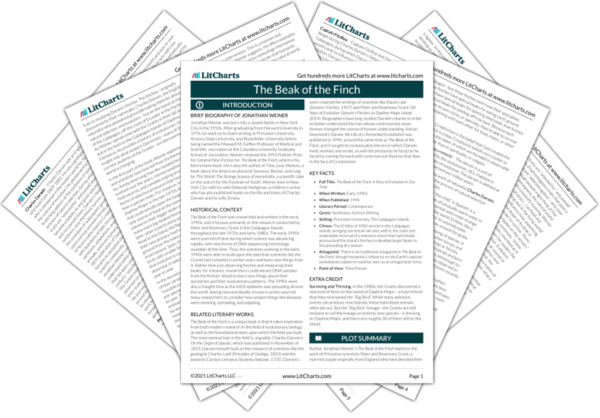Schluter’s computer presented him with three adaptive peaks, and because there are three sub-varieties of ground finches throughout the archipelago, it’s clear that his experiment was a success. In other words, Dolph’s research confirmed what the island had already shown him, the Grants, and the other researchers who’d traveled through. The computer confirmed that the forces of specialization and adaptive radiation would, in an imaginary scenario, act on the finches in the same way that they did in the real world.


